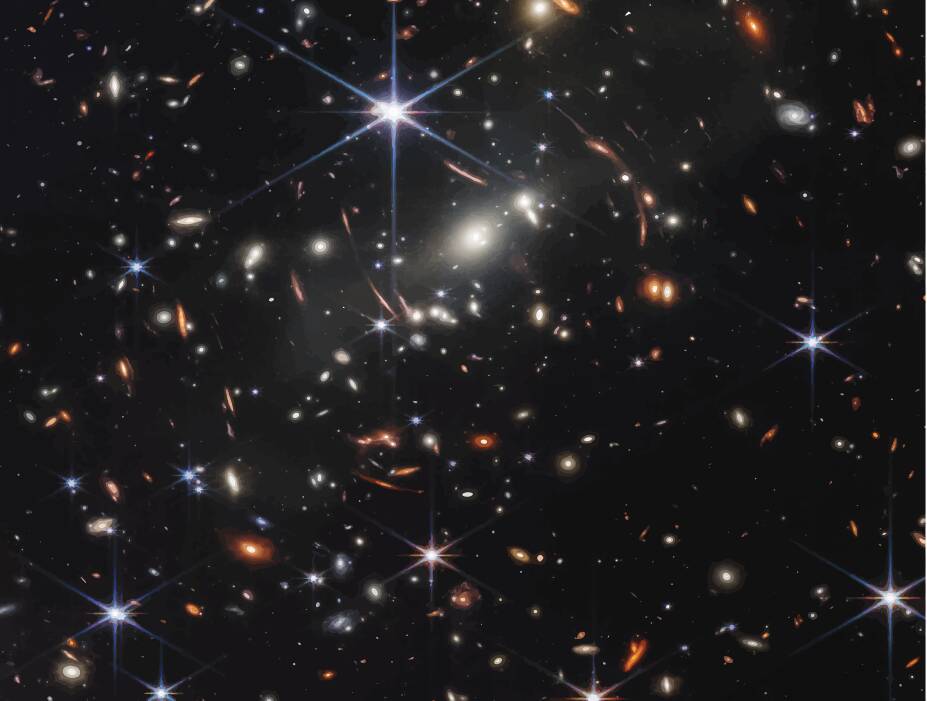
The first photos taken from the James Webb Space Telescope were released this week.
Many in the academic and space-enthusiast communities have been anticipating these photos for a long time (with construction of the telescope starting in 2004).
The first image was released on July 12 shows hundreds of galaxies around a few close stars (these stars have spikes in the image). This was followed by four others, including a photo of the southern ring nebula and them carina nebula, called the cosmic cliffs. If you were to look up at the sky, how far away are the objects in the first image?
"Webb's image is approximately the size of a grain of sand held at arm's length, a tiny sliver of the vast universe" NASA said.
The images released are in infrared light, meaning that the image (data) that the telescope takes, is translated into visible light through a computer, letting scientists see what human eyes cannot.
The telescope is the most advanced telescope that is operational outside the Earth's orbit.
It orbits at a place called Lagrange 2, or L2, 1.6 million kilometres away, so if something were to go wrong, you cannot do a spacewalk to fix it.
To get it operational, scientists needed to unfold the 6.5 metre mirror as well as its 21.18 metre sunshield in two weeks, where many things could have gone wrong.
The telescope was designed to go beyond the capabilities of the famous Hubble Space Telescope, in giving us greater insight into the universe.
Hubble was only able to see modern galaxies form in detail, whilst being able to vaguely see the first galaxies form.
Compared to Hubble, the James Webb can see the first (and oldest) galaxies form in detail (as shown in the first image released this week). Both telescopes, as in their names, are space telescopes.
It is important to have telescopes above Earth's surface as not all light that hits the Earth's atmosphere reaches the ground (or very high mountains). A lot of the light, especially emitted from the sun, is absorbed into the atmosphere, making it difficult to see very faint objects, or objects that emit light in frequencies that just can't reach the ground.
The best analogy for this I first heard from astrophysicist and cosmologist, Dr Brad Tucker. Essentially, when you are trying to collect a lot of water (data), you want a big bucket (a big mirror). So, the James Webb has a primary mirror of 6.5 metres compared to Hubble's 2.4-metre mirror.
However, the James Webb is even more special than Hubble in that it will orbit the sun and not the Earth. This is so that the James Webb can have the sunshield face the sun, with the mirror and scientific instruments on the other side.
The reason for this is so that the scientific equipment takes in less infrared light that is emitted from the sun, to clearly see what it needs to.
The James Webb is expected to complete scientific operations for more than 10 years, with the Hubble telescope expected to remain operational alongside it.
- Amy Briggs is undergraduate student at ANU studying science communication, with special interest in astronomy and astrophysics.







